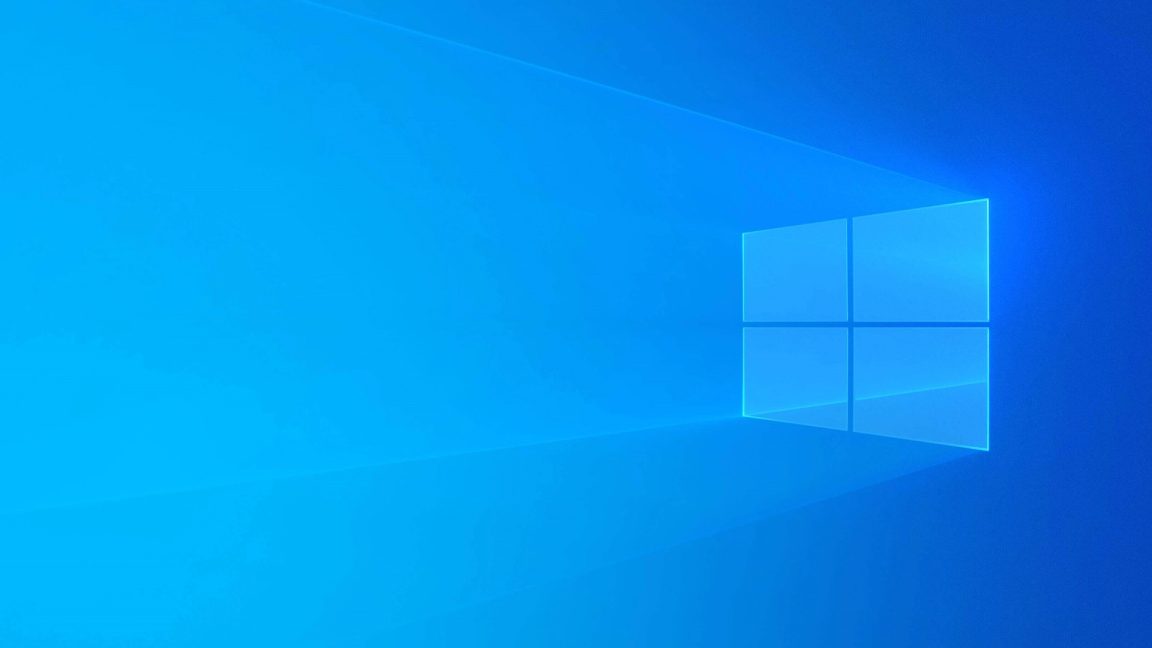- Регистрация
- 17 Февраль 2018
- Сообщения
- 38 866
- Лучшие ответы
- 0
- Reactions
- 0
- Баллы
- 2 093
Offline
End-of-support date isn’t changing, but extra year will be functionally free.


Credit: Microsoft
Last fall, Microsoft announced that individuals who wanted to keep using Windows 10 past its official end-of-support date could do so by opting into the company's Extended Security Update (ESU) program at a cost of $30 per PC. That payment would get users a single year of additional security updates. Today, less than four months before that October 14, 2025, cutoff, Microsoft is announcing additional options for people who can't or don't want to pay that fee.
Individuals who want to pay $30 for the additional year of updates will still be able to do so. But Microsoft will also extend a year of additional Windows 10 security updates to any users who opt into Windows Backup, a relatively recent Windows 10 and Windows 11 app that backs up some settings and files using a Microsoft account. Users can also opt into ESU updates by spending 1,000 Microsoft Rewards points, which are handed out for everything from making purchases with your Microsoft account to doing Bing searches.
These offers don't formally extend the end-of-support date for Windows 10. But for users who don't want to move to Windows 11 or who can't do so because their PC doesn't meet the requirements, they do effectively offer an additional year of free updates for the OS that's still installed on a slim majority of the world’s Windows PCs, according to Statcounter data.
Microsoft's blog post says that Windows 10 users will be offered access to the ESU program proactively via notifications and the Settings app. Given how aggressively Microsoft has used these and other means to push Windows 11 upgrades and new Copilot+ PCs, it's at least nice that the company isn't making Windows 10 users go digging to keep getting updates. Microsoft will test these notifications in the Windows Insider Preview channel for Windows 10 starting today. They'll begin appearing for regular Windows 10 users in July and should be rolled out to all Windows 10 PCs "by mid-August."
Once enrolled, the ESU program will support consumer Windows 10 PCs until October 13, 2026. Businesses, schools, and other organizations can still get up to three years of ESU updates, but they'll have to pay for the privilege; the year of free-ish updates only applies to consumer PCs. Microsoft said recently that it plans to support the Microsoft 365 and standalone versions of the Microsoft Office apps on Windows 10 until 2028.
Free* updates
It's worth noting that the Windows Backup and Microsoft Rewards methods for getting these updates require the use of a Microsoft Account, something Microsoft has been pushing with slowly increasing intensity in Windows 11. Windows 10 pushed Microsoft Account usage in various ways, too, but it was generally easier to create and sign in with a local account; for those people, the "free" update offer seems like another effort from Microsoft to bring them into the fold.
The Windows Backup option seems intended to ease the migration to a new Windows 11 PC when the time comes. The company may be offering a short reprieve for Windows 10 users, but the goal is still to shift them to Windows 11 eventually.
"To help make your move to a Windows 11 PC, as simple and secure as possible, we recommend using Windows Backup—built right into Windows 10," writes Microsoft Consumer Chief Marketing Officer Yusuf Medhi in Microsoft's blog post. "It’s an easy way to help you safely and securely transfer your data, personal files, and most settings and applications, so everything’s ready for you the moment you sign in."
People with existing Microsoft Accounts who don't want to use Windows Backup may already have the 1,000 Microsoft Rewards points you would need to enroll in the ESU program; my Microsoft account has 3,411 points attached to it for some reason despite an 18-month expiration window and even though I’ve never taken any intentional steps toward earning any. Users creating a new account for the first time can accumulate that many points fairly trivially over the course of a few days, including by downloading the Bing app and doing various Bing searches.
We have asked Microsoft several logistical questions about the ESU program enrollment. If you reset or totally reinstall Windows 10 on the same PC, is that PC automatically enrolled in the ESU program, or will users need to enroll again? If you temporarily enable Windows Backup to access the ESU program but then stop using Windows Backup, will your PC keep receiving the updates? And if you have multiple PCs, do you need to enable Windows Backup or spend the 1,000 Rewards points on each of them individually to join the ESU program? We'll update this article if we get answers to any or all of these questions.
It’s still the “year of the Windows 11 PC refresh”

A PC running Windows 11. Credit: Microsoft
As welcome as a year of basically free-of-charge Windows 10 security updates is, Microsoft is still sticking to its guns in promoting Windows 11 upgrades (for PCs that can install it) and full PC replacements (for everyone else). Medhi once again reiterated that 2025 is "the year of the Windows 11 PC refresh," a not particularly catchy catchphrase that the company began using back in January. Microsoft hasn't changed the end-of-support date for Windows 10, nor has it loosened the system requirements for Windows 11 to make it more broadly compatible with existing PCs.
Microsoft's efforts do seem to be paying off (or, at least, some combination of Microsoft's efforts and Windows 10 PCs naturally aging out of the install base). While Windows 10 is still running on the majority of Windows PCs worldwide (about 53 percent, according to Statcounter's May 2025 data), Windows 11's share has increased from roughly 34 percent in December 2024 to around 43 percent as of May 2025.
On PCs in the US, Statcounter's data shows Windows 11 overtaking Windows 10 in March 2025—it currently runs on around 53 percent of US-based Windows PCs, compared to 43 percent for Windows 10. Just a year ago, Statcounter's data shows Windows 10 PCs outnumbering Windows 11 PCs by roughly two to one. The Steam Hardware Survey shows a similar arc—as of May 2025, Windows 11 runs on 61 percent of Steam Windows PCs, compared to around 39 percent for Windows 10.
These stats are all a bit noisy and inconsistent, but they're useful for observing broad trend lines, and those are all pointing in the same direction: Windows 11 is making real gains after stalling out for most of 2023 and 2024.
Another year of free-ish updates won't be enough to make Windows 10 completely disappear. And the fact that you need to opt in to the ESU program instead of just getting the extra updates automatically means that some less technically savvy users probably won't get the updates no matter how low the barriers to entry are. But the additional enrollment options do at least give Windows 10 users some more choices, whether they can't install Windows 11 or just don't want to.


Credit: Microsoft
Last fall, Microsoft announced that individuals who wanted to keep using Windows 10 past its official end-of-support date could do so by opting into the company's Extended Security Update (ESU) program at a cost of $30 per PC. That payment would get users a single year of additional security updates. Today, less than four months before that October 14, 2025, cutoff, Microsoft is announcing additional options for people who can't or don't want to pay that fee.
Individuals who want to pay $30 for the additional year of updates will still be able to do so. But Microsoft will also extend a year of additional Windows 10 security updates to any users who opt into Windows Backup, a relatively recent Windows 10 and Windows 11 app that backs up some settings and files using a Microsoft account. Users can also opt into ESU updates by spending 1,000 Microsoft Rewards points, which are handed out for everything from making purchases with your Microsoft account to doing Bing searches.
These offers don't formally extend the end-of-support date for Windows 10. But for users who don't want to move to Windows 11 or who can't do so because their PC doesn't meet the requirements, they do effectively offer an additional year of free updates for the OS that's still installed on a slim majority of the world’s Windows PCs, according to Statcounter data.
Microsoft's blog post says that Windows 10 users will be offered access to the ESU program proactively via notifications and the Settings app. Given how aggressively Microsoft has used these and other means to push Windows 11 upgrades and new Copilot+ PCs, it's at least nice that the company isn't making Windows 10 users go digging to keep getting updates. Microsoft will test these notifications in the Windows Insider Preview channel for Windows 10 starting today. They'll begin appearing for regular Windows 10 users in July and should be rolled out to all Windows 10 PCs "by mid-August."
Once enrolled, the ESU program will support consumer Windows 10 PCs until October 13, 2026. Businesses, schools, and other organizations can still get up to three years of ESU updates, but they'll have to pay for the privilege; the year of free-ish updates only applies to consumer PCs. Microsoft said recently that it plans to support the Microsoft 365 and standalone versions of the Microsoft Office apps on Windows 10 until 2028.
Free* updates
It's worth noting that the Windows Backup and Microsoft Rewards methods for getting these updates require the use of a Microsoft Account, something Microsoft has been pushing with slowly increasing intensity in Windows 11. Windows 10 pushed Microsoft Account usage in various ways, too, but it was generally easier to create and sign in with a local account; for those people, the "free" update offer seems like another effort from Microsoft to bring them into the fold.
The Windows Backup option seems intended to ease the migration to a new Windows 11 PC when the time comes. The company may be offering a short reprieve for Windows 10 users, but the goal is still to shift them to Windows 11 eventually.
"To help make your move to a Windows 11 PC, as simple and secure as possible, we recommend using Windows Backup—built right into Windows 10," writes Microsoft Consumer Chief Marketing Officer Yusuf Medhi in Microsoft's blog post. "It’s an easy way to help you safely and securely transfer your data, personal files, and most settings and applications, so everything’s ready for you the moment you sign in."
People with existing Microsoft Accounts who don't want to use Windows Backup may already have the 1,000 Microsoft Rewards points you would need to enroll in the ESU program; my Microsoft account has 3,411 points attached to it for some reason despite an 18-month expiration window and even though I’ve never taken any intentional steps toward earning any. Users creating a new account for the first time can accumulate that many points fairly trivially over the course of a few days, including by downloading the Bing app and doing various Bing searches.
We have asked Microsoft several logistical questions about the ESU program enrollment. If you reset or totally reinstall Windows 10 on the same PC, is that PC automatically enrolled in the ESU program, or will users need to enroll again? If you temporarily enable Windows Backup to access the ESU program but then stop using Windows Backup, will your PC keep receiving the updates? And if you have multiple PCs, do you need to enable Windows Backup or spend the 1,000 Rewards points on each of them individually to join the ESU program? We'll update this article if we get answers to any or all of these questions.
It’s still the “year of the Windows 11 PC refresh”

A PC running Windows 11. Credit: Microsoft
As welcome as a year of basically free-of-charge Windows 10 security updates is, Microsoft is still sticking to its guns in promoting Windows 11 upgrades (for PCs that can install it) and full PC replacements (for everyone else). Medhi once again reiterated that 2025 is "the year of the Windows 11 PC refresh," a not particularly catchy catchphrase that the company began using back in January. Microsoft hasn't changed the end-of-support date for Windows 10, nor has it loosened the system requirements for Windows 11 to make it more broadly compatible with existing PCs.
Microsoft's efforts do seem to be paying off (or, at least, some combination of Microsoft's efforts and Windows 10 PCs naturally aging out of the install base). While Windows 10 is still running on the majority of Windows PCs worldwide (about 53 percent, according to Statcounter's May 2025 data), Windows 11's share has increased from roughly 34 percent in December 2024 to around 43 percent as of May 2025.
On PCs in the US, Statcounter's data shows Windows 11 overtaking Windows 10 in March 2025—it currently runs on around 53 percent of US-based Windows PCs, compared to 43 percent for Windows 10. Just a year ago, Statcounter's data shows Windows 10 PCs outnumbering Windows 11 PCs by roughly two to one. The Steam Hardware Survey shows a similar arc—as of May 2025, Windows 11 runs on 61 percent of Steam Windows PCs, compared to around 39 percent for Windows 10.
These stats are all a bit noisy and inconsistent, but they're useful for observing broad trend lines, and those are all pointing in the same direction: Windows 11 is making real gains after stalling out for most of 2023 and 2024.
Another year of free-ish updates won't be enough to make Windows 10 completely disappear. And the fact that you need to opt in to the ESU program instead of just getting the extra updates automatically means that some less technically savvy users probably won't get the updates no matter how low the barriers to entry are. But the additional enrollment options do at least give Windows 10 users some more choices, whether they can't install Windows 11 or just don't want to.
